This Is Not A Magic Show
By Joshua Jay - Sunday, March 21, 2021
Rene Magritte (1898-1967) would have made a sensational magician.
“The purpose of art,” he said, “is mystery.”
I have never experienced such a rush of inspiration as when I first encountered his work. His canvases are magic tricks—mysteries—waiting to be realized. As you walk from experience to experience in Six Impossible Things, the walls exhibit tricks of their own, courtesy of Rene Magritte.
For the next few paragraghs, let’s take a backstage tour through Magritte’s magic show.
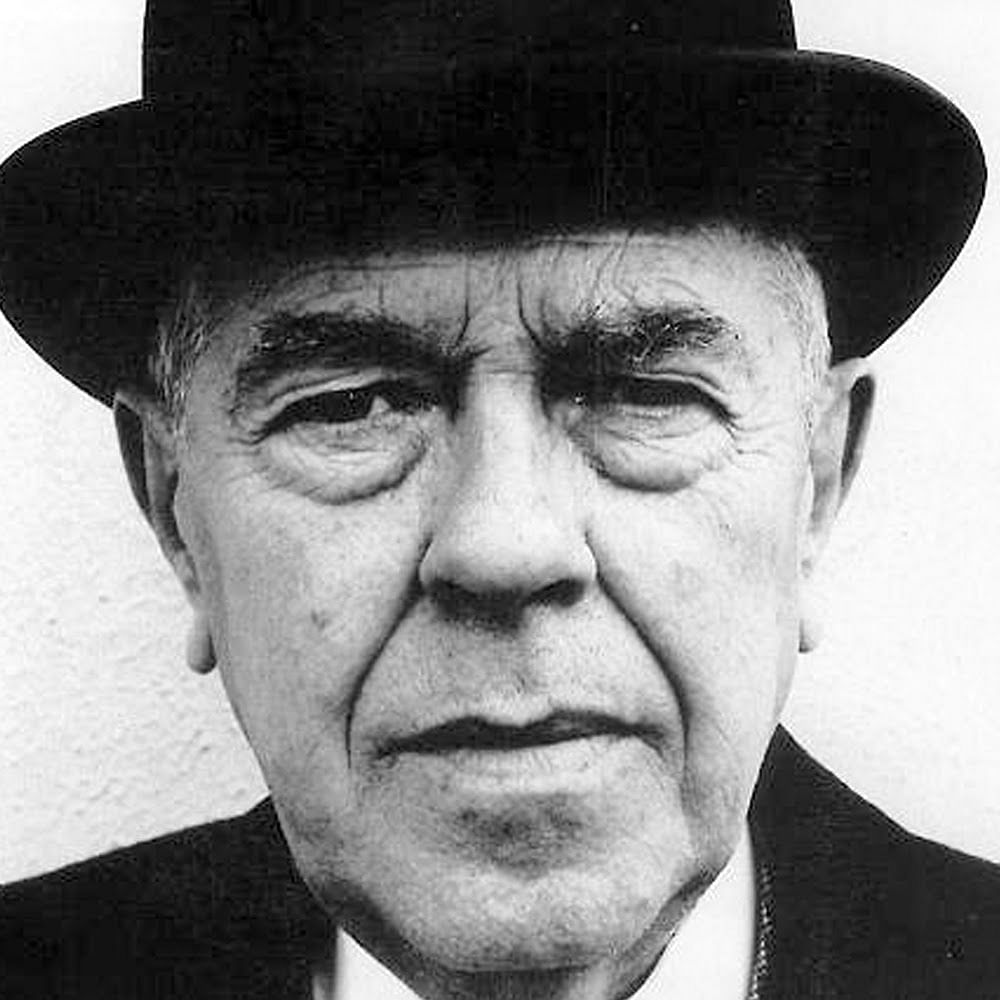
Some of his images, like The Blank Signature, are actual illusions. When we glance at the painting, it appears to be a rider on horseback, traveling through a forest. But when our eyes fix on any detail, it becomes apparent that the rider is, impossibly, part of the forest. They are one.
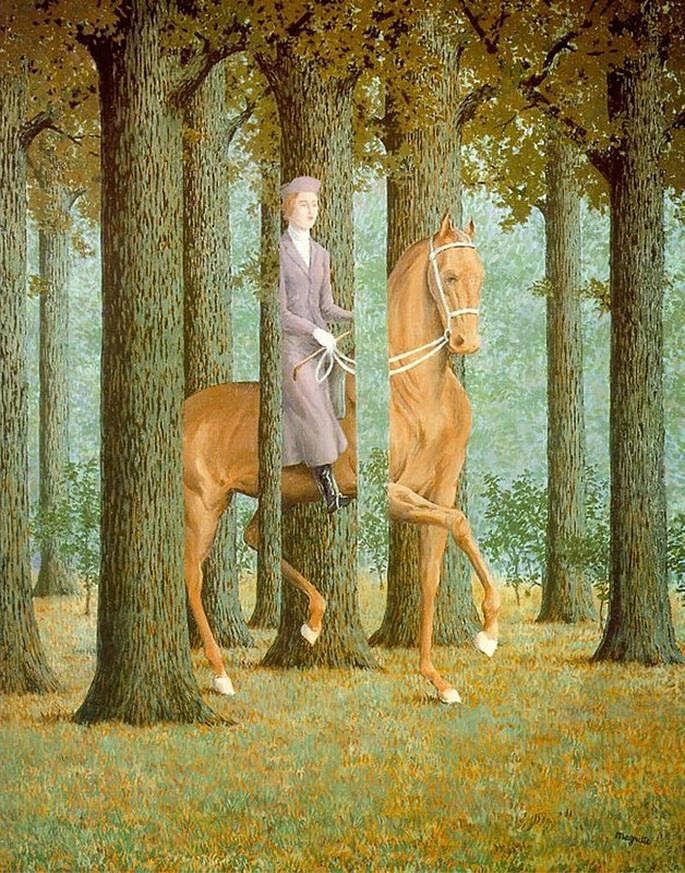
Other images, like The Musings of a Solitary Walker (1926), have an overtly magical quality. One figure levitates horizontally into the plane as Magritte (it’s a self-portrait) stands behind.
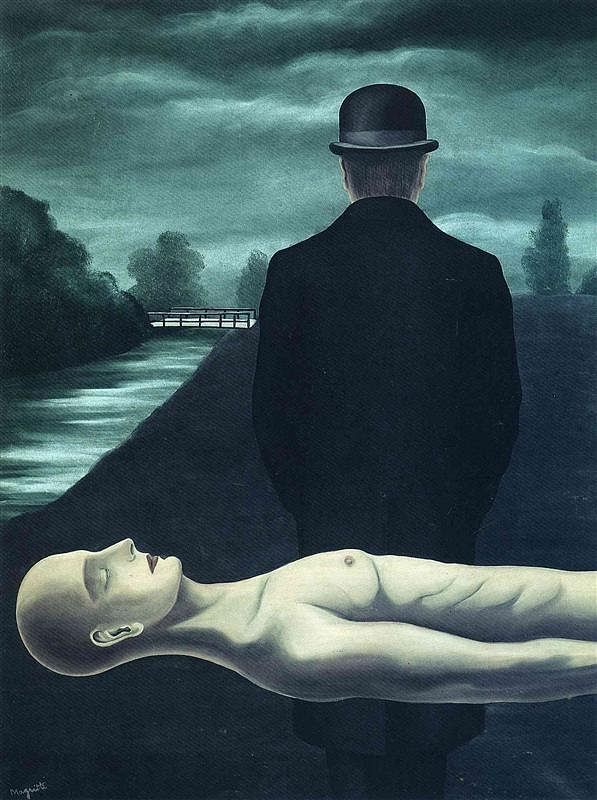
Contrast this image with an advertising poster for magician Harry Kellar (1849-1922): A dapper figure in the background with a levitating figure at the fore.
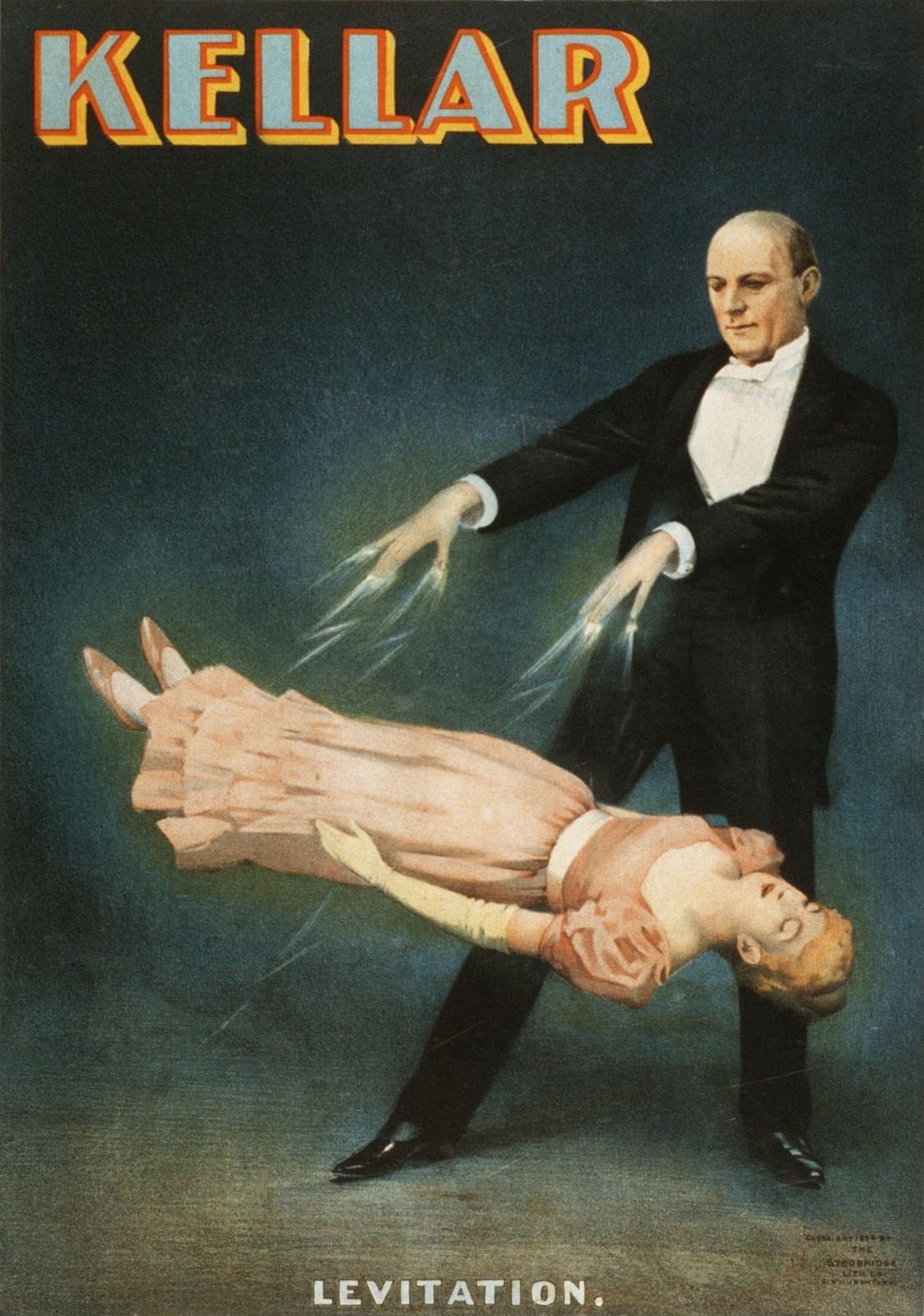
Magic posters in the decades preceding Magritte’s career are surrealist in their own way, and may have had an influence on the Surrealist movement in general, and on Magritte in particular. Here’s another Kellar that we could easily imagine as a Magritte composition.
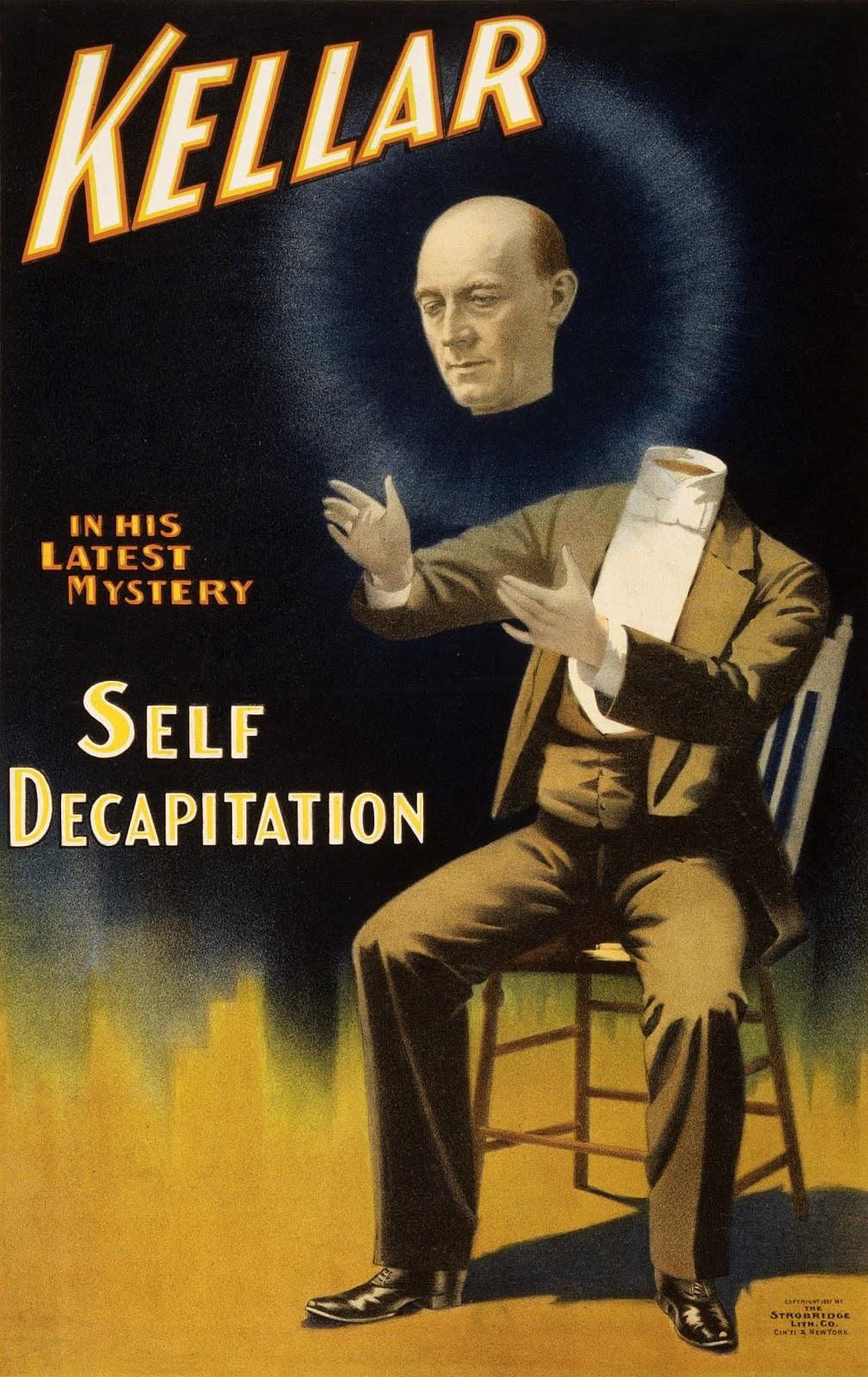
The Pilgrim, 1926, Rene Magritte.
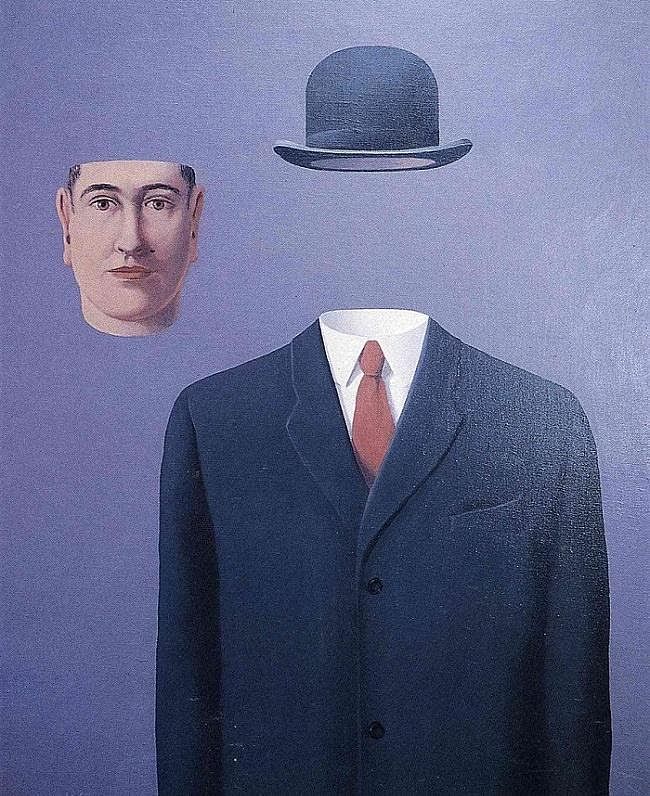
Magicians are often accused of using mirrors, and in Not to be Reproduced (1937) Magritte uses a mirror for a rather unusual magic trick. A portrait of the poet Edward James, the figure looks in the mirror but sees only what we see: the back of his head. All great magic tricks have a “convincer,” a small detail that accentuates the illusion. Here, the book on the mantelpiece is reflected accurately, making the illusion all the more striking.
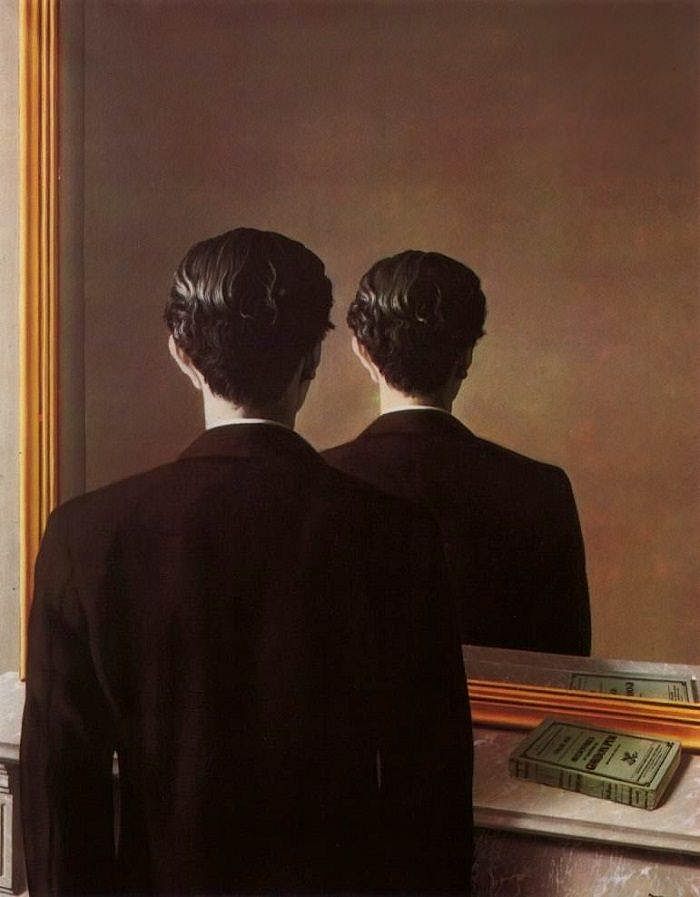
-
- Sharpe (1902-1992), an influential writer and thinker in the world of magic, posited that there are precisely six effects possible in magic.
- Production
- Disappearance
- Transformation
- Transposition
- Natural Science Laws Defied
- Mental Phenomena
Every trick you can think of fits neatly into one or more of these categories. “Sawing a Person in Half” is Natural Science Laws Defied. “The Vanishing Elephant” is, obviously, Disappearance.
Magritte’s 1933 masterpiece Elective Affinities, remarkably, exhibits every category of magic. I have never encountered another painting (or magic trick) that contains every classification of magic. To wit:
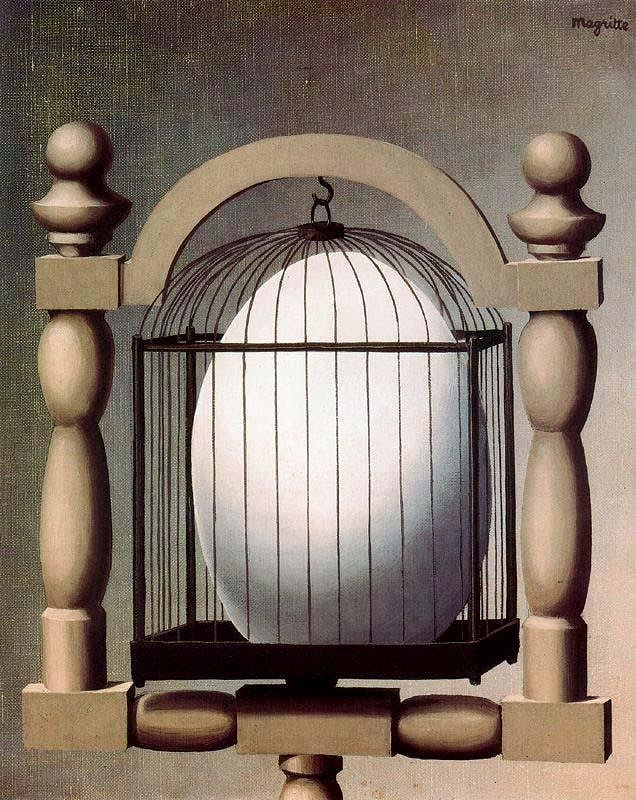
- Production: The egg clearly has appeared in the cage.
- Disappearance: The cage infers a bird, but where has the bird gone?
- Transformation: Perhaps the bird changed into the egg.
- Transposition: Perhaps the bird exists still, in the space previously occupied by the egg.
- Natural Science Laws Defied: How did such a large egg get into such a small cage?
- Mental Phenomena: Magritte painted Elective Affinities as an ode to Goethe’s Human Chemical Theory, the notion that as humans, our actions, lives, and loves are controlled not by us, but by a mysterious element in our design. The entire purpose of the painting, according to Magritte, is mental phenomena.
I love this painting. Elective Affinities does to us what every great magic trick does: it invokes unanswerable questions.
Magritte, himself, provides the only answer. “Everything we see hides another thing,” he says. “We always want to see what is hidden by what we see.”
Back to blog homepage
Similar posts on the blog:
